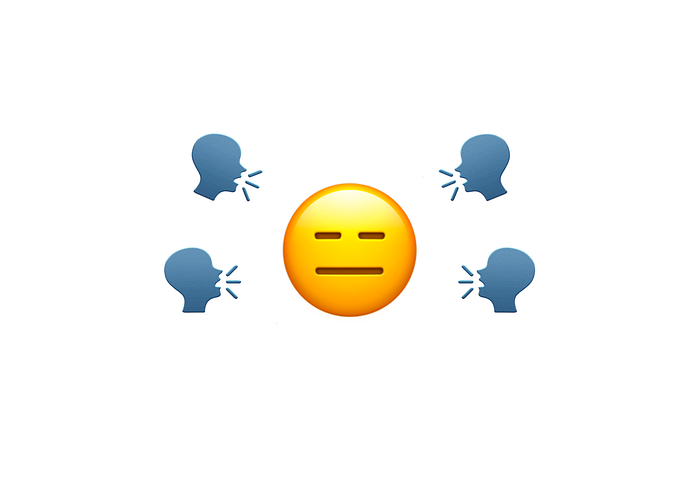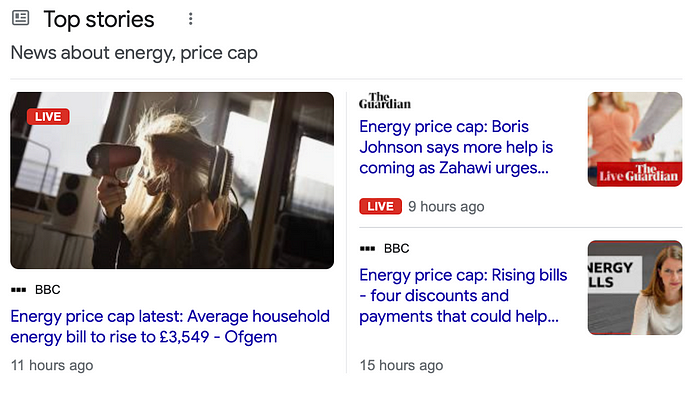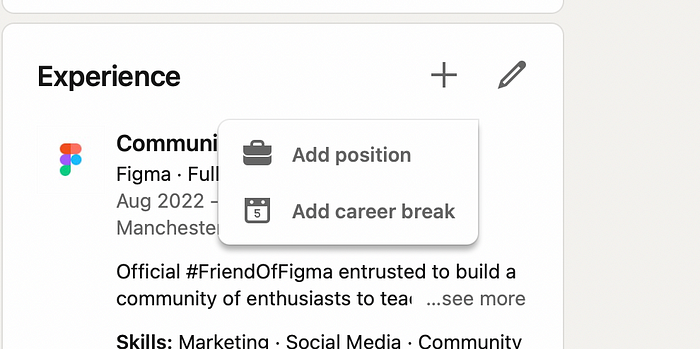

Feel like quitting UX? You’re not alone
source link: https://uxdesign.cc/feel-like-quitting-ux-youre-not-alone-2986af25a622
Go to the source link to view the article. You can view the picture content, updated content and better typesetting reading experience. If the link is broken, please click the button below to view the snapshot at that time.
Feel like quitting UX? You’re not alone
The emotional cost of practicing UX, causing burnout, death by learning, and the quarter-life crisis.

UX design is one of those fields where there isn’t, or wasn’t, a direct path into the practice, and as a result I feel we’re generally passionate about what we do. The problem with mixing passion and pleasure though, is you can start to become sick of it. Some days I think it’s simply burnout, but there’s definitely more to it—whether you’re sick of trying to break into the field, or just not changing the world the way you thought you would. Whatever the cause, I’ve outlined a few strategies you can use to take back control of your life.
If you need support, there’s help and information available such as Mental Health UK or Mental Health America.
Early warning signs
Earlier this year the media coined the term “The Great Resignation”—a phenomenon whereby a substantial part of the working population were resigning from their jobs all at once. It didn’t seem to be limited to any industry or profession, either. According to the Society for Human Resource Management, one study found two main reasons people were quitting:
- better compensation
- better work-life balance
While we’ve always wanted more, only now have people been riled up enough to do something about it. Feeling unappreciated, and not receiving in return the value we believe we’re putting in. As a workforce, we’re recognising in ourselves that we deserve better. Some more overdue than others. Specifically as a designer however, there’s some additional factors at play that exacerbate those feelings.
It’s not just you
I caught wind of this Tweet published around a week ago now, and it garnered 764 likes and over 200 replies at the time of writing. What’s more, that doesn’t even count the anonymous direct messages Lisa has solicited either. That’s a significant response, and to me indicates there’s something more going on in the UX field. It resonates with the conversations I’ve had with some close designer friends over the past couple months, too.
To illustrate further, I’ll share a few times in my career I’ve wanted to throw in the towel myself.
When I’ve felt like quitting

I have four main stories to share, from which I’m sure you’ll resonate with at least one.
It literally took years for design work to go live
At a larger organisation I expected there to be a delay in the work I was doing, whether that be down to process or even adhering to compliance requirements. What I wasn’t prepared for was years of delay. The learnings that we knew today might not apply in 2 or 3 years time anymore, and as an ex-developer I knew a realistic time frame of implementation.
Design was just a checklist item
Have you ever been on a project where you finally get permission to perform a Design Sprint, or conduct some validation research to assess a solution? There’s nothing worse than the evidence indicating this is a clearly a non-starter, yet the final decision is to press ahead and build it anyway. Even with proof, our value is ignored.
After a while, there’s no joy left in “I told you so”.
Scope changing more often than the energy cap
Design veterans will agree that identifying and framing a problem is the most crucial part of the design process. If you’re solving the wrong problem, any further efforts are moot. Yet, a constant change in priorities and scope after agreeing the defined problem can eat away the most resilient designers. Sure business needs change from time to time, but multiple changes throughout the week means constantly spinning your wheels.
Not working as a designer, or filling other job roles
Being a Technical Lead was a great experience for me, but after 9 months I was really starting to feel the burn. The knowledge that in my heart I was really a designer and could really contribute to the design team, but my hands were tied. Not everyone will find themselves in this camp, but UX design is one of those professions where I haven’t yet met anyone that “did it purely for the money”.
We did it to better the world—even just by a little.
Your authentic self
In all these cases, I haven’t been authentic and true to myself. I learned and felt strongly that there’s a better way of doing things, and that’s what we’re trained to do. It takes some discipline to temper the pace at which you want to deliver your work and make a change, but sitting too close to it for too long can cause you to develop cognitive dissonance.
When what you’re doing is far removed from what you believe you’re capable of doing, it can be disorienting. I listened to a great podcast episode recently that hits the nail on the head. If you’ve never taken a real break to reflect and consider if you’re being true to yourself, I urge you to invest the time.
Anna is wise way beyond her years, in my opinion.The emotional cost of design
What adds fuel to the fire of being inauthentic, is the emotional demands of being a designer. Our work environment is typically remote or hybrid, has co-workers from diverse cultures, and is cross-discipline. Navigating this environment is a mission in itself, let alone navigating the diversity of the users you’re designing for. Don’t get me wrong — that diversity is what I love about designing— but it can eventually take its toll.
And we haven’t even considered the emotional cost of design activities themselves.
Just look at these story headlines:
That last one really strikes a chord. In some regards I think we often act as therapists, and therapists need therapy to manage and process the emotional burden they unintentionally absorb from patients. As a discipline we don’t have the benefit of clinical supervision, nor the recognition that we might need similar support to sustainably do our work.
Death by learning
The tech field in general is fraught with learning at speed. UX design I think can be worse than engineering sometimes. Once you understand enough engineering principles, everything else is just an implementation detail. When it comes to design, you’ve got to straddle that balance between “hard” and “soft” skills even at the very start of your career. Top that with how quickly the field is evolving, it’s a recipe for disaster.
I remember when Design Sprints were all the rage. Then it was all about bootcamps and portfolios. Now, it’s all about the Figma hype. I mean that in a good way, too—there’s a reason Figma has so much support behind it. Jake Knapp, creator of the Design Sprint, made a great joke whereby designers don’t even remember Photoshop. Nowadays, I’m sure there’s capable designers out there who’ve never heard of Sketch or InVision. Yes, the tools are similar, but it’s changing quicker than I anticipated.
Where veterans may need to learn and relearn new tools, newcomers have a dizzying amount of options to learn the fundamentals. Arguably the most popular “bootcamp” today is the Google UX Design Certificate. If you check for other options, this recent article covers 9 different UX bootcamps. If you add in the academic courses such as a Masters in Human-Computer Interaction or free collections such as degreeless.design or The Guide to Design, it’s no wonder “what course should I do” is asked time and time again.
In contrast, design systems is definitely something in the last 5 years that’s gained a lot of traction, and for good reason. It takes a very different type of designer though. Whilst a traditional graphic designer will do well in most aspects of visual design, in my experience they struggle with systems thinking i.e. looking at the whole, let alone design infrastructure. There’s this underlying pressure to learn this whole other skillset, but very few can truly excel at both sides—and very few should.
And I haven’t even touched upon the plethora of community courses, content, and podcasts.
Consider the “mid-life crisis”
Finally, every single person on this planet goes through a phase of anxiety and self-doubt over the direction of their lives—often known as the mid-life crisis. For many it’s occurring earlier in our lives. So much so, that there’s an official Wikipedia page for the quarter-life crisis. Even if it happens to you, it doesn’t have to mean quitting UX forever and buying that metaphorical sports car. It just means it might be time to reset your perspective and take time to enrich your soul.
Tim Ferris was on to something when he suggested not waiting until retirement age to retire. In his book “The 4-hour Work Week”, he suggests planning mini-retirements every 5, 10, or 15 years. Taking some time out to check-in with yourself, reflect, and enjoy the fruits of your labour can help you have both a more fulfilling personal and work life in the long run. At the time it was still somewhat controversial, but career breaks aren’t as taboo as they once used to be.
If you’re not convinced, LinkedIn lets you add in a “career break” as a record in your experience. So, there’s really no better time.

What to do about it
In a word?
Rest.
But seriously, try to let things go. I have a hunch that many designers have some degree of perfectionist tendencies in them. Combine that with the drive to do some good in this world and change it for the better, we can become defeated when things just aren’t going as we’d planned.
It’s not your fault.
As designers our career is built upon hyper-focusing on micro interactions and specific journeys, but it’s easy to forget the wider picture. Perhaps it’s time to design ourselves and regain perspective.
Take a holiday, visit somewhere new, try out a new hobby. Anything to put some distance between yourself and your work. After some time, your lens on life will readjust from your specific domain and your specific product, to a regular, healthier lens again.
Think of it as going from the 3x telescopic lens on your phone to the 0.5x wide angle. After readjusting, there’ll be details and clairty you didn’t even realise was there all along.
Closing thoughts
As designers we truly want to arrive at the best result possible, but we’re forced to compromise in order to get anything done. The nature of designing for people is a double-edged sword, that can take an emotional toll. The pressure we put on our work, we end up putting on ourselves. Give yourself permission to distance yourself to rest, recover, and get a fresh perspective.
You’re fighting the good fight, but it doesn’t mean a constant 24/7 battle. The UX profession isn’t going anywhere anytime soon. Even if you don’t come back, you can be satisfied that you gave it your best shot and made a difference in your own way.
Recommend
About Joyk
Aggregate valuable and interesting links.
Joyk means Joy of geeK